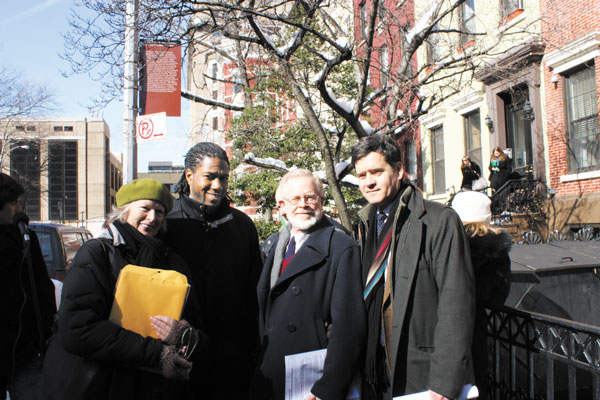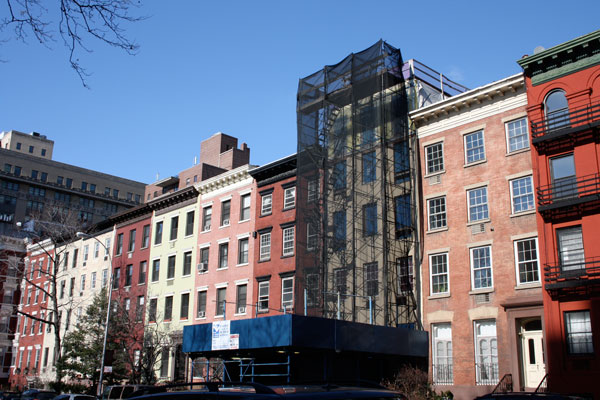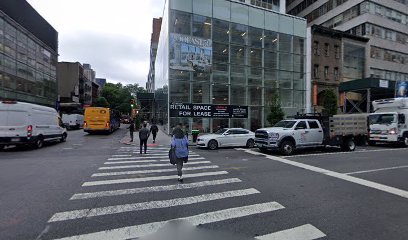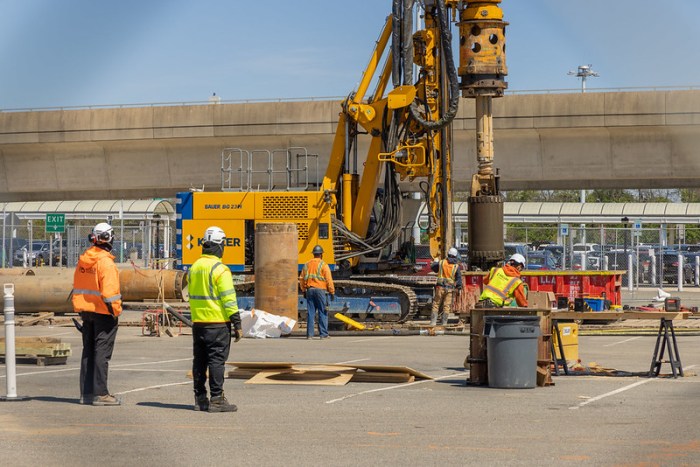
BY MAXINE WALLY | On February 12, the Board of Standards and Appeals (BSA) ordered the owner of Hopper Gibbons House — Manhattan’s only documented Underground Railroad Station and a hotly contested historical site — to get approval from the Landmarks Preservation Commission (LPC) before moving forward with construction. A coalition of preservationists, historians and elected officials maintain that the construction began on illegal grounds.
The building, located at 339 West 29th Street, lies on a row of four-story landmarked houses in the Lamartine Place Historic District. The Department of Buildings (DOB) granted owner Tony Mamounas the go-ahead to build a fifth-story — mistakenly, some allege. Mamounas asserts, however, that the DOB’s 2005 action renders the added level exempt from landmark protection given in 2010.
According to opponents of the renovation, the additional floor disturbs a key aspect of the historical significance — the Quaker abolitionist family that once owned Hopper Gibbons House used these rooftops as an escape route during the 1863 Draft Riots.
Mamounas’ lawyer Marvin Mitzner stated his plans to overturn BSA’s unanimous denial of the appeal in court.
“I could find nothing in the law that requires you to defer decision to the Landmarks Act in this case,” Mitzner said. “I believe this board’s decision was clearly in error.”
Friends of Hopper Gibbons Chair Fern Luskin accused Mamounas of “duplicitous” behavior at the meeting, claiming he “consistently cheated on his applications, construction he undertook and the photographs and affidavits” sent to the BSA.
Mitzner responded by saying the DOB gave the permit in error, and all paperwork was submitted in a lawful manner.
“He got his permit to begin development that was perfectly authorized, and approved by DOB without any suspicion that there was something wrong with that permit at the time it was approved,” he said.
Still, BSA’s ruling was final. Lawyer Jack Lester spoke on behalf of the Friends of Hopper Gibbons House, commending the Board for doing right by the community.
“I think [the decision] is in accord with statutory law and common law,” he said, “and in accordance with the submissions we’ve made.”
BSA closed the hearing, and scheduled a final decision be made on the tentative date of April 23.
On Sunday, February 10 (two days prior to the BSA meeting), elected officials students, neighbors and families gathered before the house for a rally to raise awareness organized by Friends of Hopper Gibbons.

Still shrouded behind scaffolding of stopped construction, the building resembled the argument that has befallen it these past few years: at a stalemate, eerily in limbo. All the same, participants remained cheerful and supportive of their cause.
Bronx Lab High School Underground Railroad Riders arrived by bicycle, and the event included a performance of Stephen Foster’s 1862 song, “We Are Coming, Father Abra’am” (composed to the poem by James Sloan Gibbons).
Assembly Member Richard Gottfried, State Senator Brad Hoylman and City Councilman Jumaane Williams (who designated Lamartine Place as a landmarked historic district as one of his first acts of council membership) all spoke.
“If we don’t work hard to keep this history alive, we will most certainly lose it,” Williams commented.
Organizer Fern Luskin remarked on the importance Hopper Gibbons House offers. “That this event spoke to them, and the need to preserve this building spoke to them, shows it’s not just for current New Yorkers. It’s for future generations.”
Greenwich Village Society for Historic Preservation Executive Director Andrew Berman agreed, saying the BSA did the right thing in upholding the LPC’s ruling, and says he remains hopeful that April 23rd’s verdict will also act in their favor.
“These underground railroad sites are so rare,” he said. “They are an important and overlooked part of our history, and we need to get the word and the story out there.”
Shortly after the BSA issued its February 12 ruling, a joint statement was sent to the press. Attributed to Hoylman and Gottfried as well as Speaker Christine C. Quinn and Manhattan Borough President Scott Stringer, it maintained that both the Hopper-Gibbons House as well as the other buildings within the Lamartine Place Historic District “hold tremendous local and national historical significance.” The group went on to praise the BSA’s ruling, noting that it “rightfully puts oversight of alterations to this building under the purview of the Landmarks Preservation Commission” and taking Mamounas to task for years of engaging in “a process of defacing this historic building and skirting the law.”
The offices of Marvin Mitzner did not respond for comment.

















